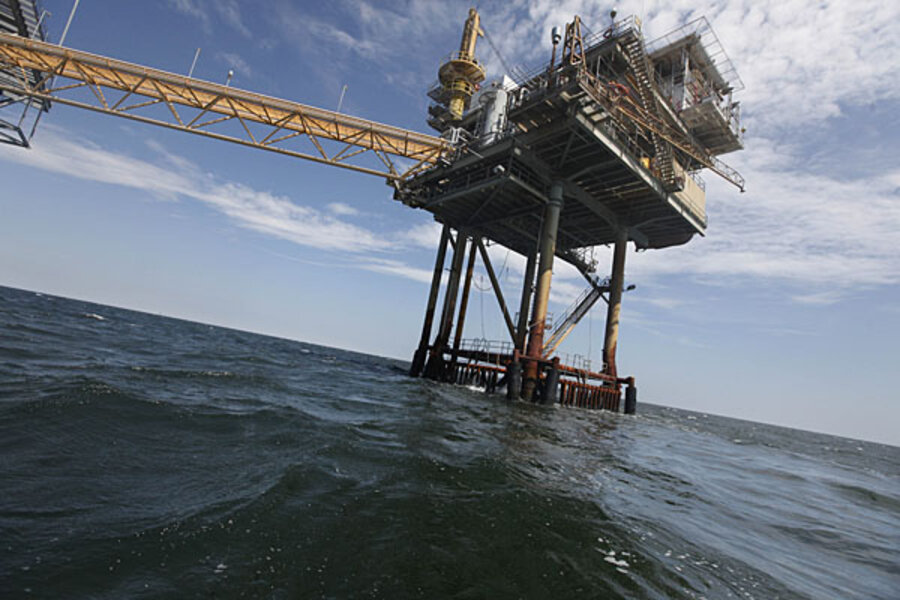Unexploded bombs lurk off US coast
| Houston
Millions of pounds of unexploded bombs dumped in the Gulf of Mexico by the U.S. government after World War Two pose a significant risk to offshore drilling, according to Texas oceanographers.
It is no secret that the United States, along with other governments, dumped munitions and chemical weapons in oceans from 1946 until the practice was banned in the 1970s by U.S. law and international treaty, said William Bryant, a Texas A&M University professor of oceanography.
As technological advances allow oil companies to push deeper into the waters of the Gulf of Mexico, these forgotten hazards pose a threat as the industry picks up the pace of drilling after BP Plc's deadly Macondo well blowout in 2010 that lead to the largest oil spill in U.S. history.
Unexploded ordnance has been found in the offshore zone known as Mississippi Canyon where the Macondo well was drilled.
The Bureau of Ocean Energy Management (BOEM) will auction 38 million acres of oil and gas leases in the central gulf in March.
The U.S. government designated disposal areas for unexploded ordnance, known as UXO, off the Atlantic and Pacific coasts, as well as in the Gulf of Mexico. But nearly 70 years after the areas were created, no one knows exactly how much was dumped, or where the weapons are, or whether they present a danger to humans or marine life.
"These bombs are a threat today and no one knows how to deal with the situation," said Bryant. "If chemical agents are leaking from some of them, that's a real problem. If many of them are still capable of exploding, that's another big problem."
Disposal zones were designated from Florida to Texas, said Bryant, who will discuss his research findings at the International Dialogue on Underwater Munitions conference that begins Monday in San Juan, Puerto Rico.
While the practice of dumping bombs and chemical weapons, including mustard and nerve gas, in the ocean ended 40 years ago some effects are just beginning to be seen, saidTerrance Long, founder of the underwater munitions conference.
"You can find munitions in basically every ocean around the world, every major sea, lake and river," Long said. "They are a threat to human health and the environment."
The oil industry is no stranger to leftovers from the World War Two.
Last year, BP shut its key Forties crude pipeline in the North Sea for five days while it removed a 13-foot (4-metre) un exploded German mine found resting cozily next to the pipeline that transports up to 40 percent of the UK's oil production.
BP discovered the mine during a routine pipeline inspection, then spent several months devising a plan to lift the bomb and move it far enough from the pipeline to safely detonate it.
In the Gulf of Mexico, which accounts for 23 percent of U.S. oil production and 7 percent of domestic natural gas output, the hazards are known, but generally ignored.
In 2001, BP and Shell found the wreckage of the U-166, a German World War II submarine, 45 miles (72 kms) from the mouth of the Mississippi River during an underwater survey for a pipeline needed to transport natural gas to shore.
Bryant said he and colleague Neil Slowey have documented discarded bombs and leaking barrels over the past 20 years while conducting research for energy companies in the Gulf of Mexico.
Records of where these munitions were dumped are incomplete and experts believe many dangerous cargoes were "short-dumped," or discarded outside designated zones.
Bryant said he has come across 500-pound (227-kgs) bombs about 60 miles off the Texascoast and other ordnance 100 miles offshore, outside designated zones. A t least one Gulf pipeline was laid across a chemical weapon dump site south of the mouth of the MississippiRiver, he said.
While the risk of an underwater bomb exploding may be small, environmental damage from chemical weapons, such as mustard gas, is worrisome and needs to be researched, Bryant said.
"We would like to do a survey to be able to say if (this material) is harmful or not," he said. "The condition of these barrels is deteriorating, so does it affect anything or not? We ought to know."
Calls and emails to various companies with wells or pipelines in the gulf seeking comment were not returned. Neither the U.S. Army, nor the BOEM would comment as well.
Sonar data from a routine seabed survey performed by C&C Technologies identified munitions in about 3,000 feet of water near a proposed project, according to a paper presented at the 2007 Offshore Technology Conference.
After determining the bombs presented a low-to-moderate risk, the project continued as planned.
The oil and gas industry needs to do more address the problem, Long said. "It makes more sense to start dealing with the munitions from a risk-mitigation standpoint to be able to conduct operations in those areas rather than trying to avoid that they are there," Long said.
The BOEM, which regulates offshore drilling in federal waters, warns companies seeking leases to drill or add pipelines about the existence of unexploded ordnance and requires underwater surveys to assess and manage the numerous natural and manmade hazards.






